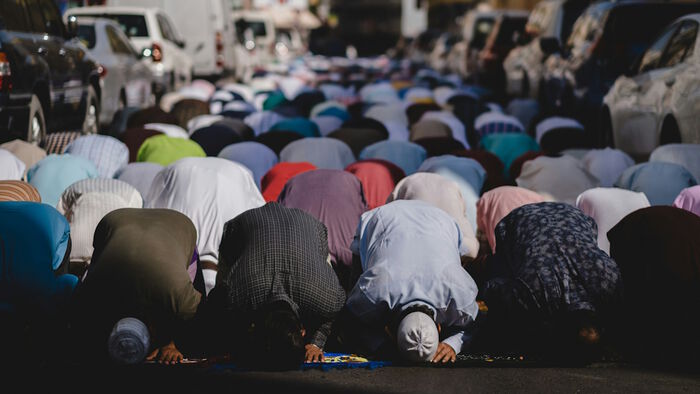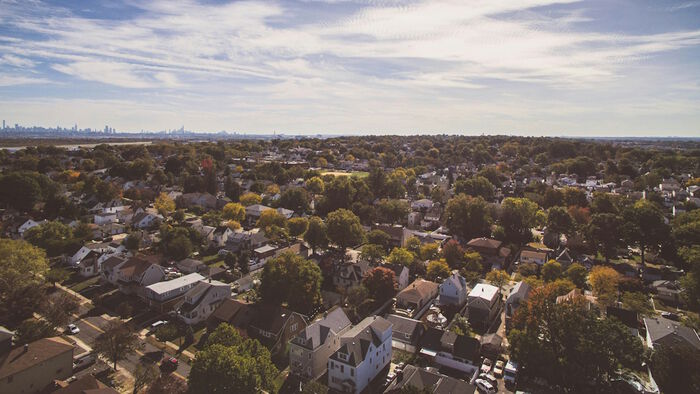In their 2023 Recap, the Western States Center – a regional anti-extremism watchdog for America’s Pacific Northwest and Mountain states – identified the uptick in the far right’s efforts to “amass power at the local level” as one of the year’s top troubling trends. From the local alliances that white nationalist figures such as Nick Fuentes formalized with the GOP in states like Texas, to the sustained local and regional strategies of groups such as the Proud Boys and Ammon Bundy’s People’s Rights Network to attack democratic institutions while simultaneously running for local office and taking over local Republican institutions, it is clear that there is a concerted push by far-right actors and groups to target local communities and democratic forums. But it is not just the Pacific Northwest and Mountain states facing this threat. In recent years, far-right groups have also besieged local communities and political arenas across the United States and in different regions across the world as well. While the far right is menacing for democracy wherever it appears, its growing local presence is particularly concerning for two key reasons. First, our understanding of the links between the far right and the local sphere is far from developed, unlike scholarship of far-right mobilization at the national level. Because of this, local communities and authorities can struggle to comprehend who they are dealing with and the specific threats they pose at this level. Second, and again relative to the national level, many local governments and civil society organizations are less well-resourced – legally, politically, and financially – to confront the far-right threat when it does appear, which leaves local communities doubly exposed.
In this brief analysis, we examine two novel far-right threats to local communities and sketch out the broad contours of a research agenda that can help illuminate the current situation. But to start, we make two crucial observations. The first of which is that many far-right actors and groups have traditionally been “geographically rooted”, with long-standing ties to particular places, peoples, and identities. As Medina et al. note, “[h]ate groups are geographical phenomena [because] hate is inherently tied to space and place in threat, in identity, and in motivation.” This is why support for far-right groups is often associated more with, or higher in, particular localities as compared to others. So, this is the first key point to acknowledge: place and local identity has, at least traditionally, been integral to the far right’s political geography.
A new far-right localism: blurring boundaries and geographies
But a second important observation to make is that the driver behind more recent far-right attempts to concentrate locally has not been far-right localism per se, but a distinct blurring of “boundaries between the different geographic, ideological, and organizational variants” of far-right activism. Two recent far-right threats can help depict this point. The first is the so-called precinct strategy, linked to the GOP’s far-right wing, that has come to prominence in the United States in recent years. The brainchild of Arizona Oath Keeper militiaman, Daniel Schultz, the strategy has been promoted by far-right leaders like Steve Bannon to urge Trump supporters to take control of the GOP from the bottom-up. The strategy is distinctly local in this regard: targeting the thousands of local precinct committees across the country – often considered the building blocks for local democracy – to get Trump’s ‘Big Lie’ message out to voters on the ground and elect favourable poll workers, election boards, and state party representatives.
But while this “village by village…precinct by precinct” strategy, to use Bannon’s words, begins at the local level, its endpoint is national: to seize the GOP from mainstream Republicans and, ultimately, to take back the White House in 2024. As Donald Trump himself wrote: “If members of our Great movement start getting involved (that means YOU becoming a precinct committeeman for your voting precinct), we can take back our great Country from the ground up". In this way, despite being branded a "ground up" tactic, in reality, the precinct strategy is a "top down" national plan to facilitate Trump’s return to the White House. That the focus is on local communities, then, has less to do with people and politics at the local level than the far right’s efforts to evade the heightened scrutiny of federal law enforcement agencies and national media outlets in the aftermath of the January 6 US Capitol insurrection. This was a point reiterated by a People’s Rights Network Idaho cell organizer recently, who posted: “No more protesting at the Capitol. It’s not going to work. You hit them in their district offices, local neighborhoods…Think local government”. But contrary to similar far-right tactics, seen particularly in Europe, which use local politics and communities as a “‘laboratory’ to test national campaigns and policy”, the far right’s precinct strategy is more about destroying America’s national democratic infrastructure by attacking it first where democratic norms, institutions, and practices are usually weakest: the local level.
A second, if very different, recent threat is the far right’s activism against Drag Queen Story Hour (DQSH) – a well-known educational initiative promoting gender diversity and literacy among children – that has popped up across North America, Europe, and Australasia over the last few years. Linked to far-right transphobic conspiracies about drag performers, and trans and nonbinary people more broadly, being "groomers" and "paedophiles", DQSH has become one of the key sites of far-right mobilization in recent years. For our purposes, what is interesting here is that both the DQSH events and the far-right activism against them blur the boundaries between local and transnational. As an event that originated in San Francisco, DQSH is now global – however, when it runs, it still has a very localized flavor, being supported by local governments, communities, and businesses. Similarly, although far-right “mobilisation against drag performances, in the form of protests and vandalism, tends to be highly localized” – targeted at local government authorities and community spaces like public libraries – they employ imported far-right tropes and tactics. As Tim Squirrell from the Institute for Strategic Dialogue writes, for example: “British anti-drag protestors are repurposing rhetoric and actions spearheaded by US-based extremist groups. In the UK’s anti-drag movement, American actors are approvingly cited by groups in Telegram channels who are inspired by their narrative of pushing back against 'grooming' and 'queer ideology’”.
To this end, there is a great deal to far-right DQSH mobilization that mirrors longstanding transnational far-right activism against LGBTIQ issues more broadly. There, as with DQSH, far-right groups often use LGBTIQ issues as a “strategic opportunity…to pursue their [broader] agenda”. What is more, to draw in Luger’s research on far-right tactics, although DQSH attacks are “site-specific and influenced by contextual factors, local histories and socio-political architectures”, they almost always “share (and cross-pollinate) rhetoric, policies, and ideologies” that cut across borders and regions. But all of this poses new challenges for local communities and governments who have had to grasp and manage, in some instances for the first time, transnational extremist networks and tropes inexplicably fusing with otherwise local actors and activism in the context of local far-right DQSH mobilization. Indeed, contrary to the more commonplace practice of hate being geographically rooted per Medina et al.’s thesis, far-right DQSH attacks have so confounded local authorities because of their capacity to blur and blend different far-right ideologies and geographies with distinctly non-far-right actors and ideas, such as gender-critical feminist groups for example.
From far-right localism to far-right translocality
Given all this, more scholarship is now needed to understand how the far right conceives of and exploits the increased connections between the local, national, and transnational scales in their activism, and what the far right’s local focus can illuminate about their broader national and transnational ambitions. Here, the concept of translocality may be particularly useful when it comes both to connecting the dots between different local sites of activism as well as between local, national, and transnational scales given the concept’s focus on the “fluidity and relationality” between sites and scales. In particular, in both the far right’s precinct strategy and DQSH attacks, comprehending how and which local communities and issues are “co-produced by immobile and mobile populations…that link places through networks of social relations” will provide a better understanding of far-right motivations, tactics, and successes across different localities and scales.
Such an analysis will not only reveal the different ways in which these ostensibly local events help perform or produce a broader constellation of national and transnational far-right activism and ambitions. It will also contribute to nuancing the often overly simplistic geographic lexicon or geography of discontent, which sees far-right activism and support clustered in economically depressed and culturally left-behind rural areas, for a more scalar geographic understanding that is able to make distinctions not just between different types of locality but how far-right actors and ideas are performed between and across local, national, and transnational scales.
.jpg)

.jpg?alt=listing)


